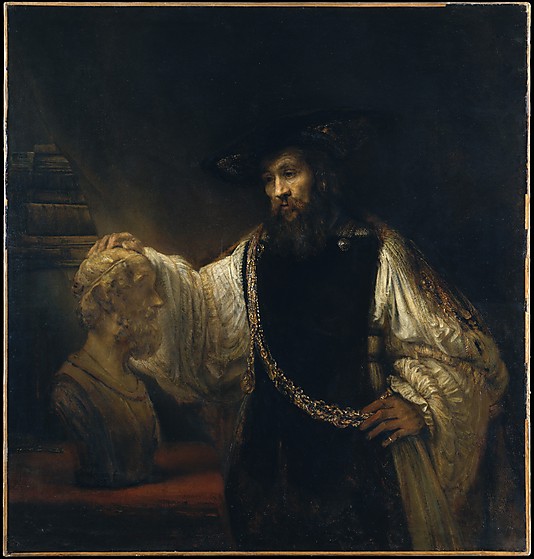(Compare Bosch's great Ecce Homo)
The bust of the Emperor hovers over the staged scene. What irony is here just in that very arrangement. It is not Pilate or the Hebrew audience whence the order is given for the crucifixion, it is Rome! (Or perhaps, better yet, the Isle of Capri.)
The bust of Homer is just as ironic, yet in a different way. And this is the nature of multiple levels of irony known only to the genius of poetic truth. But irony is not mere pedestrian stuff. For it is clear as day that Homer's bust can "see"-- from the light exudes from him. Just as it ironically does in his Philosophe Lisant, the life of Christ etchings and needless to say the ever quite literally optically moving self portraits. Yet Aristotle is evidently utterly blind though he claims that the senses are all. For Rembrandt knew the nature of precisely what lives on beyond the grave...He knew how to "cap the imagination" of supposed kings and like Keats could well have written lines like these- were he not primarily a composer in paint:
The living hand, now warm and capable
Of earnest grasping, would, if it were cold
And in the icy silence of the tomb,
So haunt thy days and chill thy dreaming nights
That thou wouldst wish thine own heart dry of blood
So in my veins red life might stream again,
And thou be conscience-calmed--see here it is--
I hold it towards you.




No comments:
Post a Comment